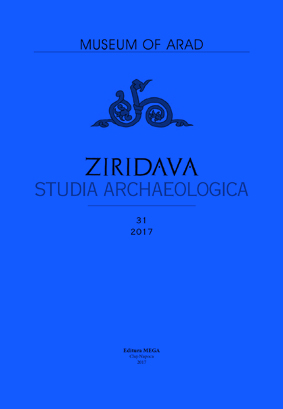The location of Egres Cistercian monastery – Igriş (Timiș County), in the light of recent geophysical research
The location of Egres Cistercian monastery – Igriş (Timiș County), in the light of recent geophysical research
Author(s): Daniela Tănase, Gábor Bertók, Anita Kocsis, Balázs MajorSubject(s): Archaeology
Published by: Editura Mega Print SRL
Keywords: Era; Cistercian abbey; Arpadian kings; geophysical researches; archaeological researches
Summary/Abstract: The Cistercian abbey of Egres, founded by King Béla III (1172–1196), was one of the mostimportant monasteries in the medieval Kingdom of Hungary. The foundation of the Arpadian kings became theburial place of King Andrew II (deceased in 1235) and his wife, Yolande of Courtenay (deceased in 1233). Theabbey enjoyed numerous privileges during the 13th century, but went through a period of decline during the 14thand 15th centuries, deteriorating during the 16th century, especially after falling under Ottoman rule in 1551.Only starting with the middle of the 19th century scientists have started to show an interest in the fate ofthis monastery. Some Hungarian art historians and archaeologists have thus recorded visiting Igriș and seeingthe ruins of the abbey church. Nevertheless, during the 20th century the idea that the monastery was not locatedon the territory of the village of Igriș but near the dam on the Mureș, upstream from the village, became establishedamong the Romanian researchers. In the end of the 20th century, art historian Suzana Móré Heitel hasbrought the topic back to attention and has stated, on the basis of her documentary researches, that spot wherethe monastery once stood was now in a garden called “La Ofer”, located in the north-eastern part of the villageof Igriș, in the municipality of Sânpetru Mare, Timiș County.In 2013, after researching specialized works and archival documents, specialists have initiated geophysicalresearches performed with the georadar; the researches were taken up again in 2016 with a more advanceddevice. These researches have led to the identification of the site of the Cistercian abbey and have confirmed theground plan sketched by Pál Molnár in 1869. The archaeological researches performed in 2016 have confirmedthe results of the geophysical investigations and have thus also validated Suzana Móré Heitel’s hypothesis basedon 19th century data.
Journal: Ziridava. Studia Archaeologica
- Issue Year: 31/2017
- Issue No: 1
- Page Range: 229-240
- Page Count: 11
- Language: English

